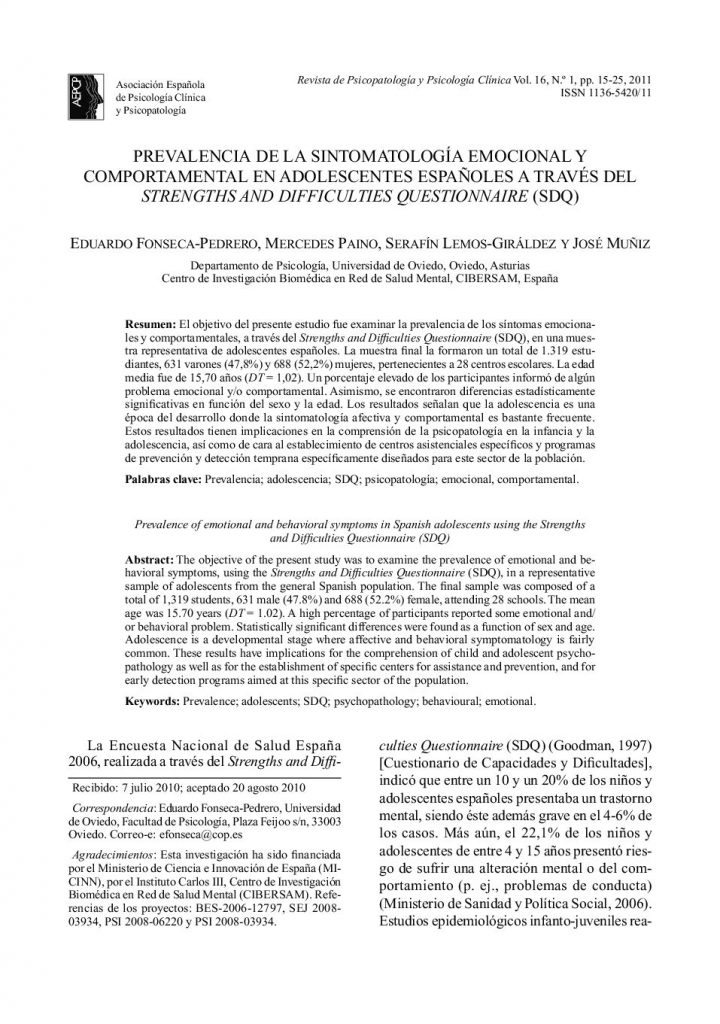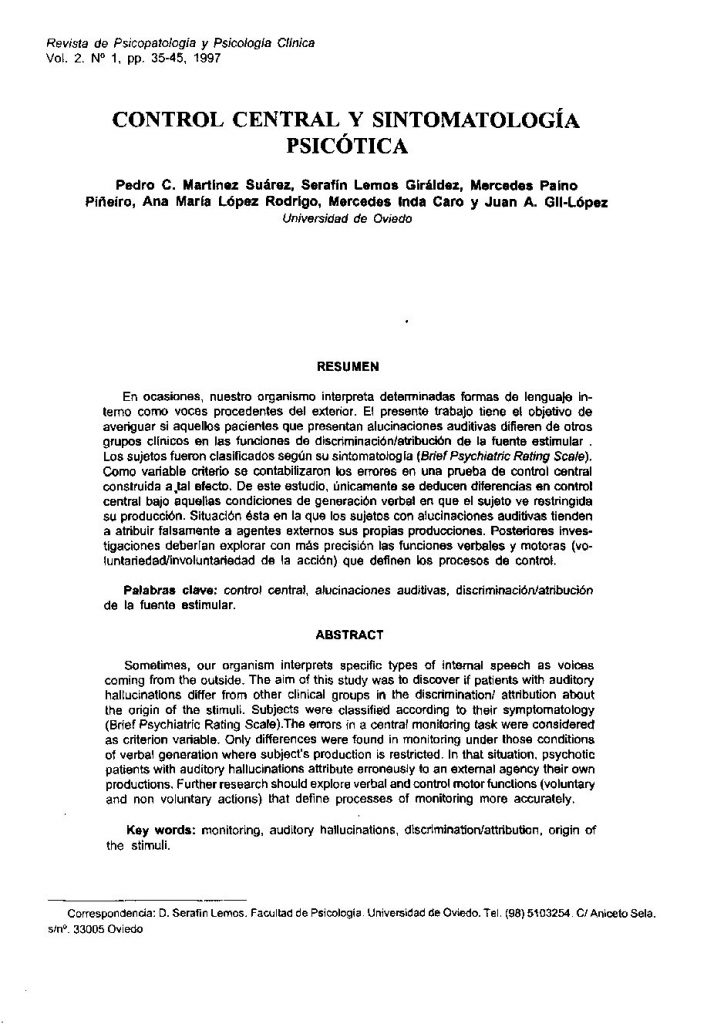Prevalencia de la sintomatología emocional y comportamental en adolescentes españoles a través del Strengths and Difficulties Questionnaire (SDQ).

- Eficacia de los tratamientos psicológicos basados en mindfulness para los trastornos de ansiedad y depresión: Una revisión sistemática.
- Prevalencia de la sintomatología emocional y comportamental en adolescentes españoles a través del Strengths and Difficulties Questionnaire (SDQ).
- Programa de potenciación de la resiliencia para pacientes con artritis reumatoide.
- Personalidad y síndromes clínicos: Un estudio con el mcmi-iii basado en una muestra española.
- Applicability of the Bayesian methodology to the study of low incidence diseases: Example of child anxiety.
- Trastornos de personalidad en fumadores y personas con dependencia de la cocaína que acuden a tratamiento: Un estudio comparativo.
- de Rivera, J. (2010): Los síndromes de estrés. Madrid: Editorial Síntesis.
- Bell, L. y Rushforth, J. (2010): Superar unaimagen corporal distorsionada: Un programa para personas con trastornos alimentarios. Madrid: Alianza Editorial.
The objective of the present study was to examine the prevalence of emotional and behavioral symptoms,using the Strengths and Difficulties Questionnaire (SDQ),in a representative sample of adolescents from the general Spanish population. The final sample was composed of a total of 1,319 students, 631 male (47.8%) and 688 (52.2%) female, attending 28 schools. The mean age was 15.70 years (DT = 1.02). A high percentage of participants reported some emotional and/or behavioral problem. Statistically significant differences were found as a function of sex and age. Adolescence is a developmental stage where affective and behavioral symptomatology is fairly common. These results have implications for the comprehension of child and adolescent psychopathology as well as for the establishment of specific centers for assistance and prevention, and for early detection programs aimed at this specific sector of the population.
El objetivo del presente estudio fue examinar la prevalencia de los síntomas emocionales y comportamentales, a través del Strengths and Difficulties Questionnaire (SDQ), en una muestra representativa de adolescentes españoles. La muestra final la formaron un total de 1319 estudiantes, 631 varones (47,8%) y 688 (52,2%) mujeres, pertenecientes a 28 centros escolares. La edad media fue de 15,70 años (DT = 1,02). Un porcentaje elevado de los participantes informó de algún problema emocional y/o comportamental. Asimismo, se encontraron diferencias estadísticamente significativas en función del sexo y la edad. Los resultados señalan que la adolescencia es una época del desarrollo donde la sintomatología afectiva y comportamental es bastante frecuente. Estos resultados tienen implicaciones en la comprensión de la psicopatología en la infancia y la adolescencia, así como de cara al establecimiento de centros asistenciales específicos y programas de prevención y detección temprana específicamente diseñados para este sector de la población.




